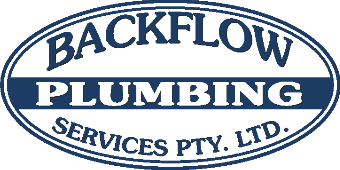What is Backflow?
- Backflow occurs because a condition exists in a water supply system that will cause back-siphonage (back-pressure).
- Back-siphonage can occur on a property through a vacuum created in the water supply system.
- Examples of back-siphonage would be a pipeline breakage, undersized pipework or high withdrawal rates.
- Back-pressure can occur within properties when high pressure is generated downstream by pumps, thermal expansion or elevation.
- Backflow prevention starts by isolating a possible contamination source from the town mains or storage tanks (rainwater tanks) from the tap or appliance.
What is backflow prevention?
Backflow prevention is the term used to refer to the prevention of an unwanted, reverse flow of water from a potentially polluted or contaminated source back into the clean drinking water supply.
Examples of potential sources of contamination:
- Fire Hose Reels (FHRs)
- Irrigation systems
- Swimming pools
- Vehicle maintenance pits
- Ornamental ponds
- Air conditioning towers
- Vehicle/bin washing bays
- Chemical injection areas
Examples of properties requiring backflow prevention:
- Hotels, motels and apartment buildings
- Vehicle workshops, garages and car-washes
- Shops
- Restaurants
- Caravan parks
- Medical and dental facilities
- Dry cleaners and laundries
- Hospitals and funeral parlours
- Sports Clubs
- Schools, day care centres and kindergartens
- Pest control and water carrying vehicles
- Botanic gardens
What is the safeguard to prevent a backflow occurrence?
A correctly selected backflow prevention device (one way valve) will eliminate any risk of contamination of the drinking water supply. Backflow devices are either testable or non-testable types with the selection dependant on the risk associated with the possible contamination.
Application & registration of backflow prevention devices
Council is required to keep a register as per the following:
- Standard Plumbing and Drainage Regulation 2003 Section 38 – Testable backflow prevention devices,
- State Government Standard Plumbing and Drainage Regulation 2003.
A local government, or an authorised entity, must maintain a register of the testable backflow prevention devices.
An owner of an installed testable backflow prevention device must
- register the device with the local government or entity; and
- have the device inspected or tested by a person who is licensed to do the work, every 12-months.
The endorsed plumber who tests a backflow prevention device, must within ten business days from inspection, provide written test results to Council.
For further information please contact Backflow Plumbing Services.
